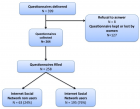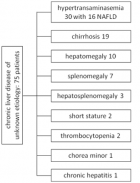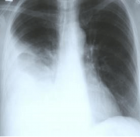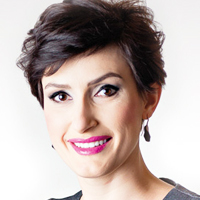About Clemson University
Clemson University
Articles by Clemson University
Comprehensive phenotypic characterization and genetic distinction of distinct goosegrass (Eleusine indica L. Gaertn.) ecotypes
Published on: 4th October, 2019
OCLC Number/Unique Identifier: 8282461318
Goosegrass (Eleusine indica L. Gaertn.) is a troublesome weed in turfgrass systems throughout the world. The development of herbicide resistant ecotypes has occurred to multiple modes of action. Goosegrass is a prolific seed producer (~50,000 per plant), fast growing and diverse weed. Such growing attributes make it essential to have a better understanding of the genetic diversity of various ecotypes. The objectives of this study were to determine if morphologically distinct goosegrass ecotypes collected in Florida were phenotypically distinct and genetically different. Phenotypically, the goosegrass ecotypes can be classified as follows; dwarf, intermediate 1 (int_I), intermediate 2 (int_II) and wild. The dwarf had the least seedheads followed by the wild ecotype; 5 and 17 respectively, while int_I and int_II had highest number of seedheads; 22 and 34 respectively. The dwarf ecotype had lowest height of 6 cm and the wild ecotype had highest height of 36 cm. Dwarf and int_II ecotypes had shortest internode length of 0.2 cm and 1 cm, respectively, while the wild ecotype had longest internode length of 7 cm. The dwarf ecotype had lowest number of racemes per plant of 1, while the wild ecotype had highest number of racemes per plant of 7. Total biomass was lowest for the dwarf and int_II ecotype; 0.7 g and 1.5 g, respectively, and total biomass was highest for the wild ecotype at 5 g. Gene sequencing of two rice (Oryza) gene sequences (accession AP014964 (gene A) and AP014965 (gene B)) and subsequent phylogenetic analysis suggest the ecotypes are genetically different. Three single nucleotide polymorphisms (SNP) of interest were discovered indicating allelic differences between ecotypes.
In vitro and preventative field evaluations of potential biological control agents and synthetic fungicides for control of Clarireedia jacksonii sp. nov.
Published on: 6th February, 2020
OCLC Number/Unique Identifier: 8537104274
Clarireedia jacksonii sp. nov. Formerly Sclerotinia homoeocarpa F.T. Bennett, the causal agent of dollar spot (DS), is the most destructive pathogen in turfgrass. Symptoms appear as circular patches 10-40 mm in diameter with small tan lesions surrounded by a darker band, sometimes presenting an hour glass appearance. A multi-year study was initiated with the objective of determining the efficacy of biological control agents (BCA) and tank mixes of BCA’s and synthetic fungicides on DS control. Nutrient source was also evaluated to determine any interaction with the BCA’s and tank mixes. in vitro studies evaluated the efficacy of synthetic and BCA’s for C. jacksonii control. Quarter strength potato dextrose agar was amended with ¼, ½ and full labeled rates of various products. Chlorothalonil at all rates provided greatest (> 90%) control of C. jacksonii for study duration. Biological control agents provided best efficacy at ¼ and ½ label rates. Streptomyces griseoviridis provided least efficacy and may have exacerbated formation of C. jacksonii. Preventative field evaluations for synthetic and BCA’s provided different results between two study years. In Year 1, all treatments had < 15% disease severity for the duration of the study. In year 2, disease pressure was extremely elevated. Synthetic program 1, centered on azoxystrobin + propiconazole applications and conventional fertility sources, provided best results with < 5% disease severity for the duration of the study. Reduced synthetic program 1, and synthetic program 2 followed closely with < 10% disease severity. Reduced synthetic programs were based on monthly applications of either chlorothalonil or pyraclostrobin every 30 day, alternated with biofungicide applications. Synthetic program 2 utilized rotation applications of pyraclostrobin and chlorothalonil every 14 days. Organic programs, utilizing only biofungicides and organic fertility sources, provided the least amount of control and exceeded the 15% threshold by the second month of the evaluation period.

HSPI: We're glad you're here. Please click "create a new Query" if you are a new visitor to our website and need further information from us.
If you are already a member of our network and need to keep track of any developments regarding a question you have already submitted, click "take me to my Query."























































































































































